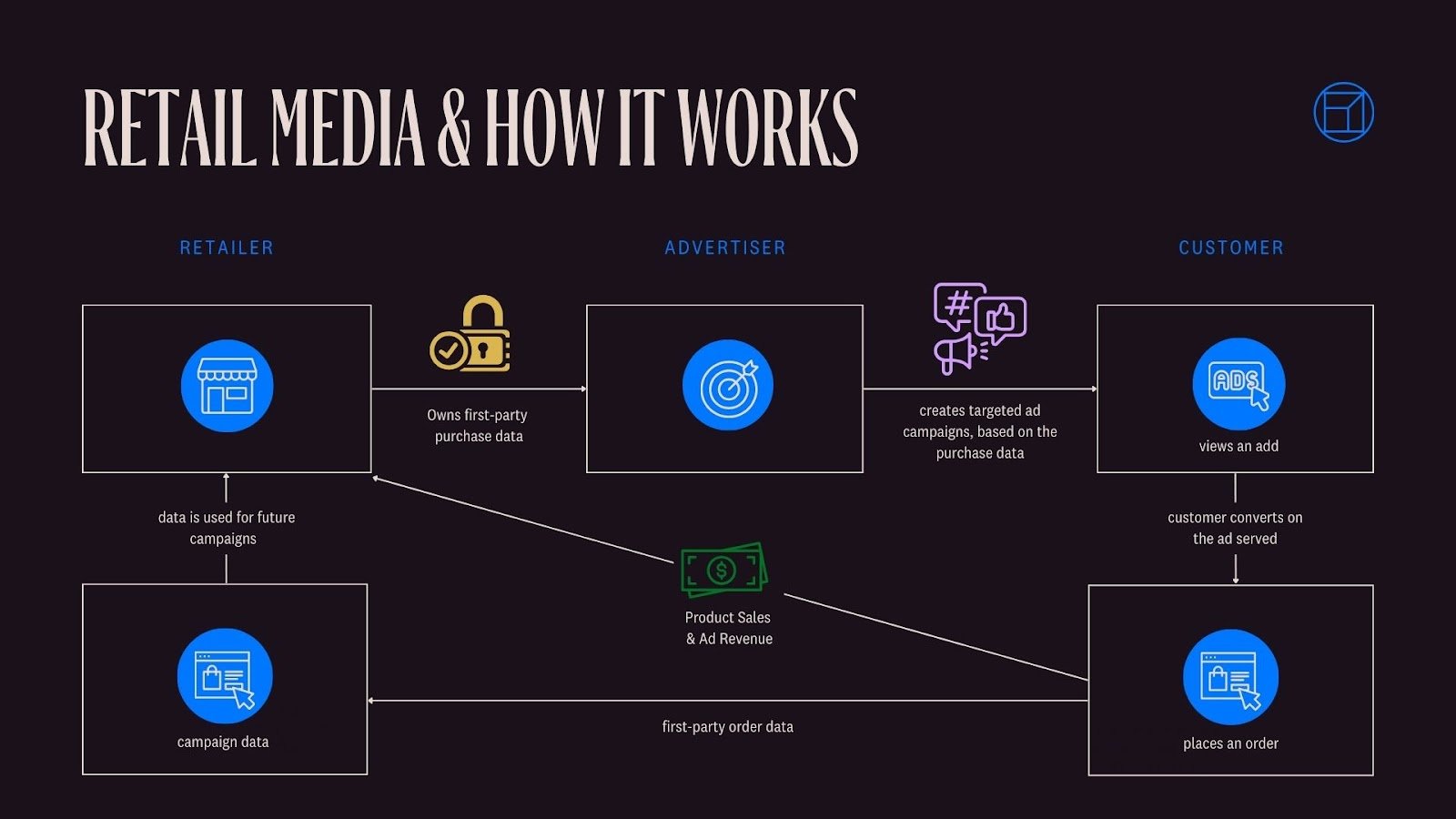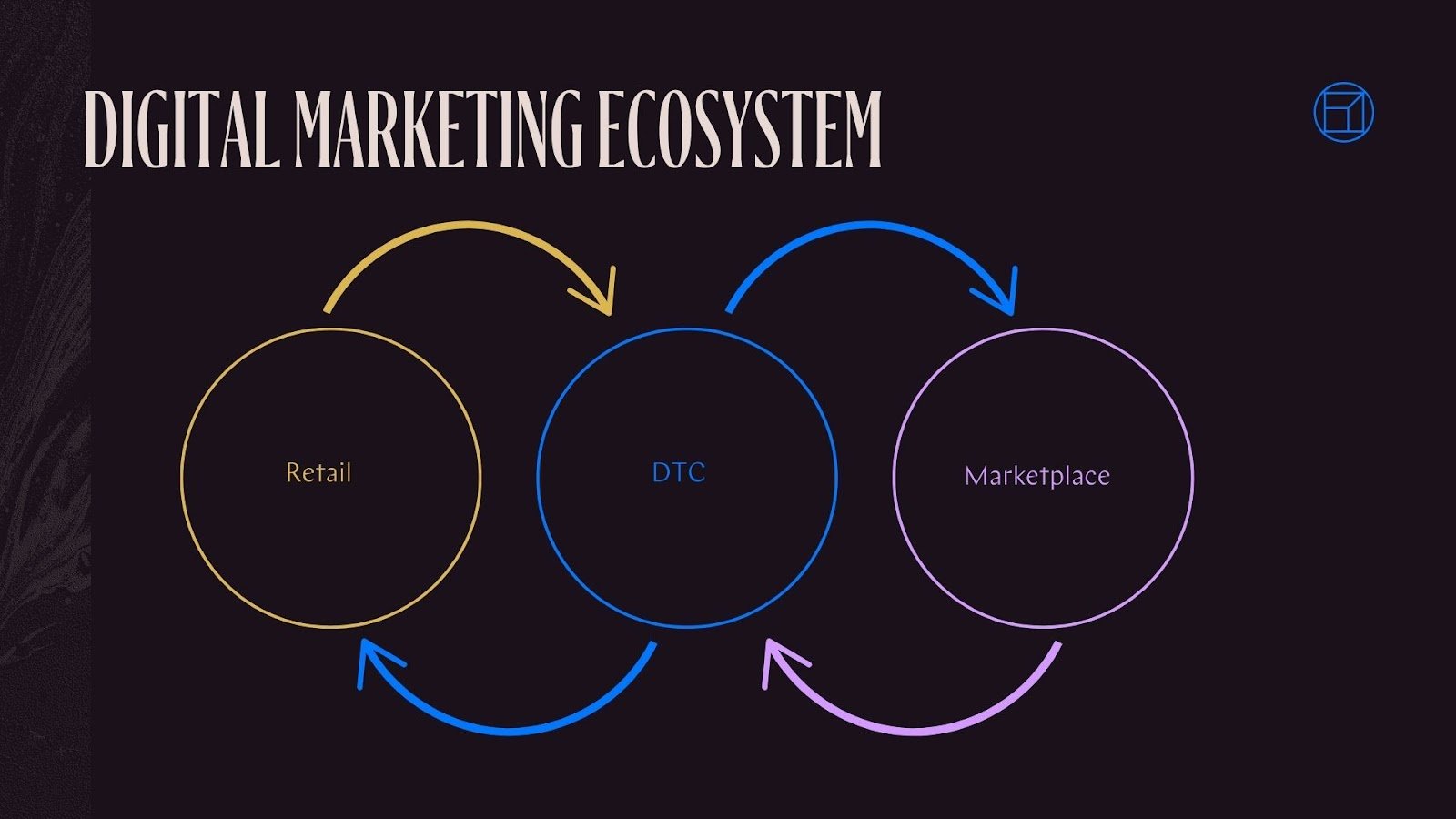Retail media is one of the fastest-growing advertising channels, allowing brands to advertise within vast retail media networks. Brands interested in benefiting from retail media pay to promote their products or services directly on the websites or apps owned by Amazon, eBay, Walmart, Costco, Target, Macy’s, Instacart, and many others.
According to Statista, global spending on digital retail media advertising will surpass $176 billion by 2028. In recent years, numerous brands have incorporated retail media into their advertising strategies. If you are not partaking in retail media, now is the perfect time to start. Keep reading to get a better understanding of retail media and its advantages for brands.
Understanding Retail Media
While retail media continues to grow and evolve, at Blue Wheel, we define retail media as the support of your brand’s retail presence via advertising across different retail media channels. By incorporating retail media into your advertising strategy, you can narrow in on your target customers as they grow closer to their point of purchase. Retail media networks transform the online shopping experience into a dynamic marketplace where brands can seamlessly integrate their marketing efforts with the consumer's purchasing journey.
The surge of retail media in recent years owes much to the rapid expansion of online shopping, accelerated by the COVID-19 pandemic. In 2021 alone, eCommerce sales in the US totaled $870 billion, marking a 14.2% increase from 2020 and a staggering 50.5% surge from 2019. Retail media represents a powerful fusion of commerce and content, fundamentally altering how brands engage with their audience.

As online shopping evolves, more brands are turning to retail media advertising. With advertisements strategically placed throughout the shopping journey, from search results and product pages to checkout screens, they get to capture the customers’ attention at key decision-making moments. By seamlessly integrating advertising into the shopping experience, retail media enables brands to deliver promotional messages in a natural and non-intrusive way.
Digital Marketing Ecosystem
Apart from focusing on your DTC and marketplace initiatives, adding retail media to your advertising plan can help close the loop on your omnichannel marketing efforts. This is where the digital marketing ecosystem comes in place. There are several platforms and digital marketing channels you can use to drive traffic to retailers such as Rite Aid, Walgreens, Target, or Macy's, and more. When we talk about retail support or retail spending, ad spend is focused on the budget that's going to those retailers via channels such as Meta, Criteo, Google, TikTok, and more.
As a brand, you want to ensure you have a presence throughout your entire digital marketing ecosystem. Your spending on DTC will potentially fuel your marketplace performance. On the other hand, your marketplace spending and awareness are going to fuel people coming to either your DTC website or looking for you on a retailer’s platform, whether it's Ulta, Sephora, Macy's, etc.
What Blue Wheel has seen with clients is that when they invest in retail media, customers come to their DTC websites and the marketplace to purchase, meaning that all three components of the digital ecosystem work together in synergy. Ultimately, you want someone to purchase from you, right? Of course, you have different margins for DTC, marketplace, and retail. But if you attract customers to your brand and achieve brand loyalty, that is going to be a win in your books.

Leveraging Data & Ad Types for Targeted Advertising
Retail media can leverage the first-party customer data accumulated by online retailers, enabling brands to deliver highly targeted and personalized ads. By analyzing customer behavior, preferences, and purchase history, retailers can tailor ads to specific audience segments, increasing the likelihood of conversion and maximizing return on investment for brands. Similar to DTC and marketplace awareness campaigns, retail media helps you generate awareness for where your products or services are sold, meaning your key metrics are impressions, clicks, CTR, etc. For the majority of your retail media ad spend, you won’t be able to track sales unless you are doing a direct buy on a retailer’s website, and they have a tracking setup. Not to say that you shouldn’t invest in Meta or TikTok, as those are some of the most used social media apps daily. Instead, establish your key performance metrics and monitor your overall sales.
Retail media can take various forms, including sponsored product listings, display ads, native advertising, and influencer partnerships. On-site ads, such as sponsored products, sponsored brands, and display ads, reach customers through platforms like Amazon and Walmart. Off-site display ads are served through partnerships using retail data, while in-store digital advertising presents evolving targeted ads in brick-and-mortar stores.
Furthermore, retail media offers brands remarkable visibility and control over advertising campaigns. By examining impressions, clicks, click-through rates, and detailed demographic and behavioral data, brands can optimize their marketing strategies for maximum impact. This sets retail media apart from traditional advertising channels, where measuring effectiveness can be more challenging.
Determining Your Retail Media Goals
With the rise of retail media, brands are no longer focusing only on their DTC and marketplace goals, but are adding retail efforts to the equation as well, while keeping in mind their overall brand goals. As we mentioned above, unlike with DTC and marketplace, you are not able to track sales one-to-one.
There are three main goals that you can have as a brand with retail media, and it’s important to determine yours. These goals are not mutually exclusive, meaning you don’t have to choose one or the other.
Establish Your Brand: For example, if you are new to a retailer, such as Ulta or Macy’s, you need to inform customers that you are now present at those retailers. By establishing your brand, customers will know where to find your products.
Grow Your Brand: Once the customers are aware of your brand, you will want to expand across other product lines or categories.
Support Your Brand: You can benefit from large retailer tentpole events, support seasonal items, or champion a product launch.
The Future of Retail Media
The future of retail media holds exciting opportunities for brands to create even more personalized and engaging customer experiences. By staying ahead of trends and embracing new technologies, brands can continue to leverage the power of retail media to thrive in the digital age.
As eCommerce continues to evolve, the influence of retail media will increase, offering brands new opportunities to engage with their audience and drive sales in the digital marketplace. As eMarketer projects, apparel and accessories will remain the largest category for eCommerce sales through 2027. Furniture and home furnishings will become the second largest category this year, but computer and consumer electronics will fall to third place.
Several factors are contributing to the rise of retail media, and the shifting landscape of consumer behavior is the main among them. With the expansion of eCommerce and the rise of digital-first consumers, traditional advertising channels have become increasingly fragmented and less effective at reaching target audiences. In contrast, retail media offers a direct line to consumers at the point of purchase, where their intent to buy is at its peak. This proximity to the transactional moment gives retail media a unique power to influence purchasing decisions in real-time.
Embracing Innovation While Upholding Ethics
Despite its advantages, the growing influence of retail media comes with its challenges. As retailers increasingly monetize their platforms through advertising, there are concerns regarding data privacy, transparency, and the potential for anti-competitive behavior. Critics argue that the dominance of a few big players in the retail media space could suppress competition and limit consumer choice, deepening existing power differentials between brands and retailers.
As the retail media landscape evolves, brands should embrace innovation while upholding the principles of transparency, accountability, and consumer privacy. By doing so, they can harness the full potential of retail media to fuel growth, foster brand loyalty, and create lasting connections with their audience. By providing a platform for niche products and emerging brands to reach their target audience, retail media has the potential to nurture innovation and diversity within the marketplace.
Conclusion
In summary, the rise of retail media represents a fundamental shift in how brands engage with consumers in the digital age. By leveraging the power of data-driven insights, retail media networks have created a dynamic advertising ecosystem that offers unparalleled opportunities for brands to connect with their audience.
However, as retail media continues to grow and evolve, it is essential to remain vigilant about the ethical and regulatory implications to ensure that it serves the best interests of consumers and brands.
To learn how to advertise your brand with retail media, watch our latest webinar, “Navigating the Growth of Retail Media for eCommerce Brands,” and contact Blue Wheel for more information.







.png)
.png)